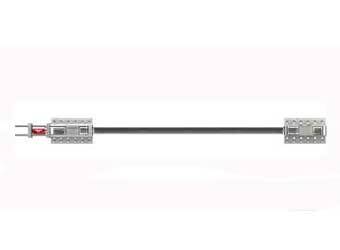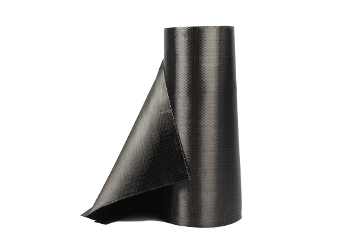Solusi
Horse Construction menawarkan rangkaian lengkap material perkuatan struktur dengan dukungan teknis, dukungan dokumentasi, dukungan produk, dukungan perangkat lunak, dukungan proyek.
FRP

Application of FRP in reinforcement engineering
Beam reinforcement
The method of strengthening the flexural strength of the front section of reinforced concrete beams with FRP is basically the same as the traditional method of sticking steel reinforcement, that is, sticking FRP to the tension surface of the beam with a bonding material. Before pasting, the concrete surface needs to be polished, repaired, leveled, cleaned and dried to ensure that the concrete pasting surface is solid, smooth and clean. When using prefabricated FRP, the surface of FRP before pasting should be treated as required by the manufacturer.
There are many ways to strengthen the shear capacity of reinforced concrete beams. According to the different paste structure, it can be divided into the following 3 types:
1) "II" shaped reinforcement method, that is, only stick FRP on both sides of the beam;
2) "U"-shaped reinforcement method, that is, paste FRP on both sides and bottom of the beam;
3) Wrap reinforcement method, that is, wrap the full section of the beam with FRP when possible.
For the first two methods, appropriate tracing measures should be taken at the free end of the FRP to prevent premature peeling.
Column reinforcement
When repairing and strengthening the reinforced concrete upper column, the FRP fiber is wound in the ring direction of Duzi, and the FRP and the old concrete upper are bonded with epoxy resin. The key problem of using FRP to repair and strengthen the column structure is that in addition to ensuring the effective bonding of FRP and concrete, it is also necessary to reasonably estimate the changes in concrete performance due to the constraints of FRP.
Reinforcement of masonry structure
Masonry structure occupies an important position in structural engineering, and many masonry structures have relatively high historical value and use value. Due to the approach of the design base period, the improvement of structural design and seismic standards, the hidden dangers of design and construction, and the increasing requirements for the safety, practicability and durability of buildings, many masonry structures need to be repaired and reinforced. In recent years, a new technology of using FRP to strengthen masonry structures has been proposed, which is not only suitable for the reinforcement of local cracks in the wall but also for the reinforcement of the wall under the condition of insufficient bearing capacity, which can avoid the shortcomings of traditional masonry structure reinforcement methods.
FRP reinforcement can improve the seismic performance of the structure, mainly because FRP restrains the wall to prevent cracks and improve the stress state of the wall. The function of FRP is equivalent to the tension rod in the cabinet frame model. It buckles and stabilizes during the loading process. The existence of FRP makes the hysteresis loop full, the area increases, the deformation capacity is strengthened, the ductility increases, and the declining section of the skeleton curve is gentle. Thereby, the seismic performance of the overall structure is improved, and the sudden damage of the overall structure caused by the brittle failure of the brick masonry is avoided.
New development of frp application in bridge engineering
With the rapid economic development and rapid technological advancement, countries all over the world have higher and higher requirements for civil engineering. Under certain conditions, it is difficult for traditional building materials to meet this development requirement. FRP composite material has many advantages such as light weight, high strength, corrosion resistance, fatigue resistance, good durability, multi-function, wide application, design and easy processing. In important civil engineering, such as ultra-large spans, ultra-high-rise buildings, underground structures, marine engineering, high-durability applications, as well as applications in special environmental engineering, permanent engineering, structural reinforcement and repair, and large-scale engineering structures in service monitoring, etc. Both have great advantages. It can meet the newer and higher requirements of modern civil engineering for new building materials. As a new type of building material and technology with development potential, FRP composite materials are not intended to replace traditional building materials steel and concrete, but as an important supplement to traditional building materials.
Anda dapat menemukan segala yang Anda butuhkan di sini. Percayalah dan cobalah produk - produk ini, Anda akan menemukan perbedaan yang besar setelah itu.

Pelat polimer bertulang serat karbon (CFRP) Horse adalah pelat komposit yang diawetkan terlebih dahulu, yang diikatkan ke struktur sebagai perkuatan eksternal dengan epoksi HM-120CP.

Sistem Laminasi CFRP prategang Kuda (sistem CFRP pasca-tegang) mencakup perangkat penahan dan laminasi serat karbon yang dirancang khusus untuk jembatan, bangunan, dan tulangan struktur baja.

Serat karbon Horse Construction digunakan untuk perkuatan struktural, perbaikan, dan perbaikan substrat beton, pasangan bata, baja, dan kayu pada bangunan, jembatan, jalan raya, rel kereta api, terowongan, dermaga, dan bandara sipil.